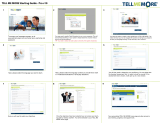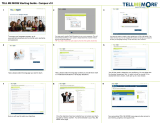
Table of contents
1 Components .................................................................................................................................................. 1
Right side ............................................................................................................................................................... 1
Left side ................................................................................................................................................................. 3
Display .................................................................................................................................................................... 4
Touchpad ................................................................................................................................................................ 5
Button and speaker ................................................................................................................................................ 6
Labels ..................................................................................................................................................................... 7
2 Navigating the screen .................................................................................................................................... 8
Using Touchpad and touch screen gestures .......................................................................................................... 8
Tapping ................................................................................................................................................ 8
Scrolling (Touchpad only) .................................................................................................................... 9
One-nger scrolling (touch screen only) ........................................................................................... 10
One-nger swipe (touch screen only) ............................................................................................... 11
Two-nger pinch zoom (touch screen only) ..................................................................................... 11
3 Using the action keys ................................................................................................................................... 12
Using the action keys ........................................................................................................................................... 12
4 Power and battery ....................................................................................................................................... 14
Factory-sealed battery ........................................................................................................................................ 14
Charging the battery ......................................................................................................................... 14
5 Printing ...................................................................................................................................................... 15
Printing from the Google Chrome browser ......................................................................................................... 15
Printing with Google Cloud Print web printing service ....................................................................................... 15
6 More HP resources ....................................................................................................................................... 16
More HP resources ............................................................................................................................................... 16
7 Electrostatic Discharge ................................................................................................................................ 17
8 Accessibility ................................................................................................................................................ 18
HP and accessibility ............................................................................................................................................. 18
Finding the technology tools you need ............................................................................................ 18
v





















